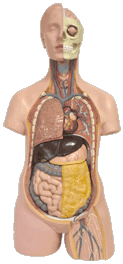At WiseGEEK, we're committed to delivering accurate, trustworthy information. Our expert-authored content is rigorously fact-checked and sourced from credible authorities. Discover how we uphold the highest standards in providing you with reliable knowledge.
What is Osteonecrosis?
Osteonecrosis refers to the death of a section of bone tissue that results from an injury, disease, or clot that prevents new blood from reaching the bone. Without a blood supply, bone cells do not receive enough oxygen or nutrients to thrive. The affected bone eventually becomes brittle and disintegrates. Doctors typically treat the condition by surgically restoring the blood supply and grafting healthy bone tissue onto the damaged joint. With surgical treatment and follow-up physical therapy, patients are usually able to regain most of their strength and range of motion.
Any bone in the body can potentially be affected by osteonecrosis, though the major joints are the most susceptible. Most cases involve the femoral bone in the hip, the tibia in the knee, or the humerus in the shoulder. Symptoms do not normally arise in the earliest stages of osteonecrosis. As more tissue dies, an individual may notice that his or her joint is sorer than usual after physical activity. Over the course of several months, the joint may cause constant pain and be tender to the touch. The condition leads to a limited range of motion and eventually leaves the joint incapable of moving at all.

Blood can be cut off from a bone because of trauma, such as a fracture or dislocation, or an illness that affects blood flow, such as a clotting disorder or sickle cell anemia. Research also suggests that long-term smoking and alcohol use may put people at a higher risk of developing osteonecrosis, as such activities affect blood pressure and circulation. Osteonecrosis is most commonly seen in people who are between the ages of 30 and 60.
An individual who has chronic pain in a joint should visit a physician to be screened for osteonecrosis and other potentially serious conditions. A doctor can make a diagnosis by asking the patient about symptoms, physically examining the joint, and taking x-rays. Bone cell death can be plainly seen in x-ray images, and the doctor uses the scans to determine the severity of the condition.
After making a diagnosis, the doctor bases treatment decisions on the underlying cause. When it is obvious that a treatable disease is causing bone problems, a patient is usually given medications and fitted with crutches or braces to help keep weight off of the joint until it heals. Most cases of osteonecrosis, especially those related to bone fractures, require surgery to prevent serious future complications. A surgeon may decide to cut away damaged tissue, break apart a blood clot, or perform an extensive bone graft. In an instance of severe joint damage, the surgeon might remove it completely and replace it with an artificial joint.
AS FEATURED ON:
AS FEATURED ON:










Discuss this Article
Post your comments